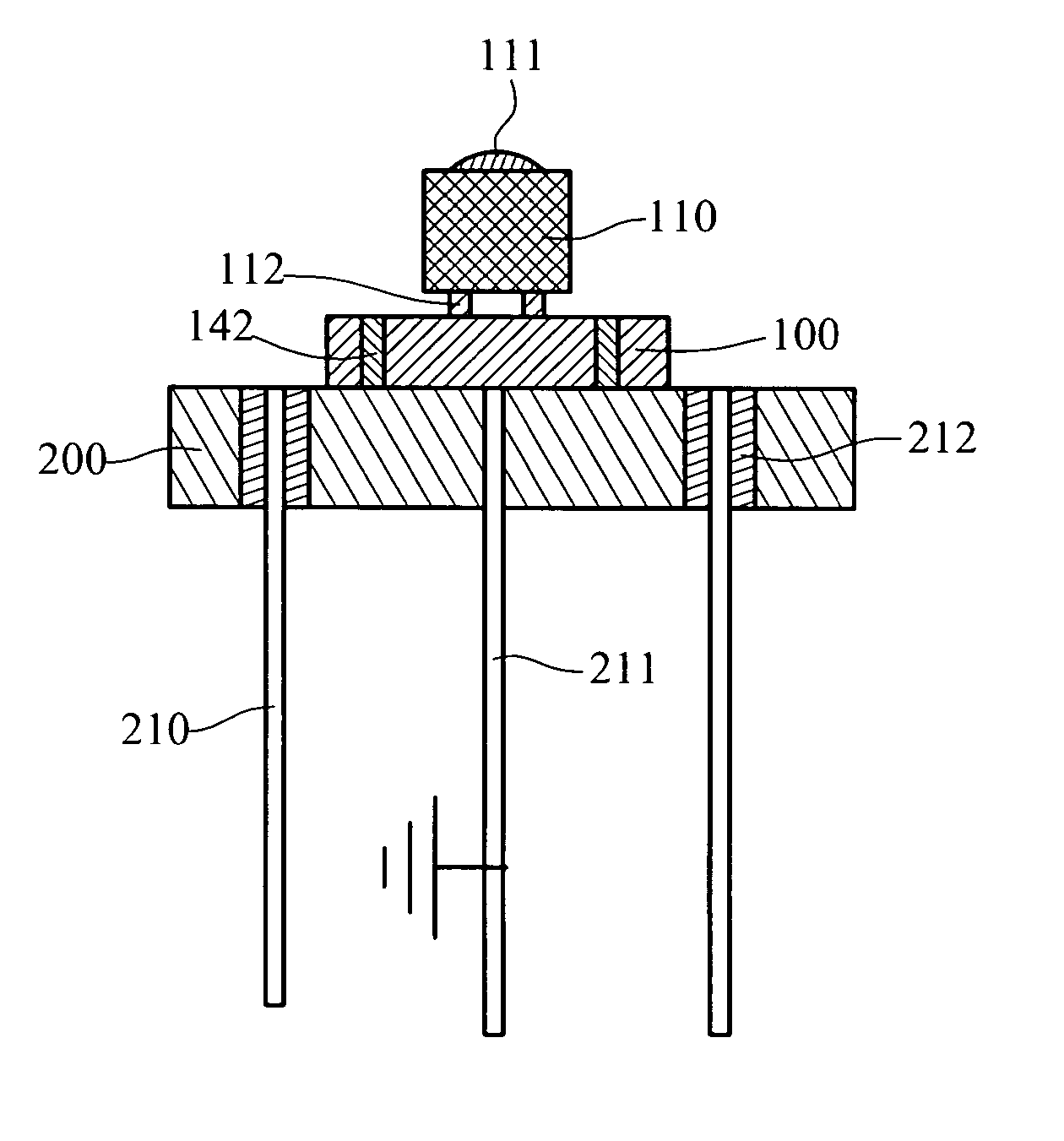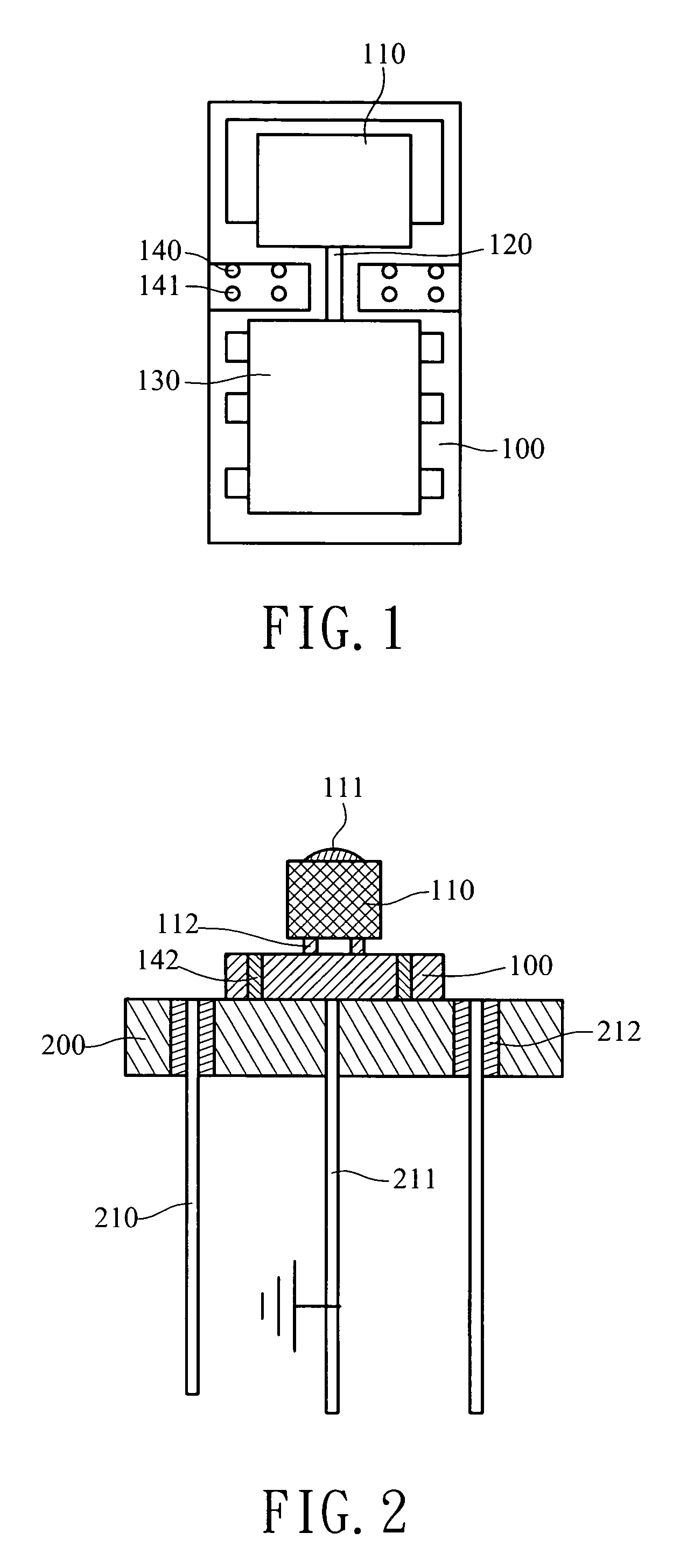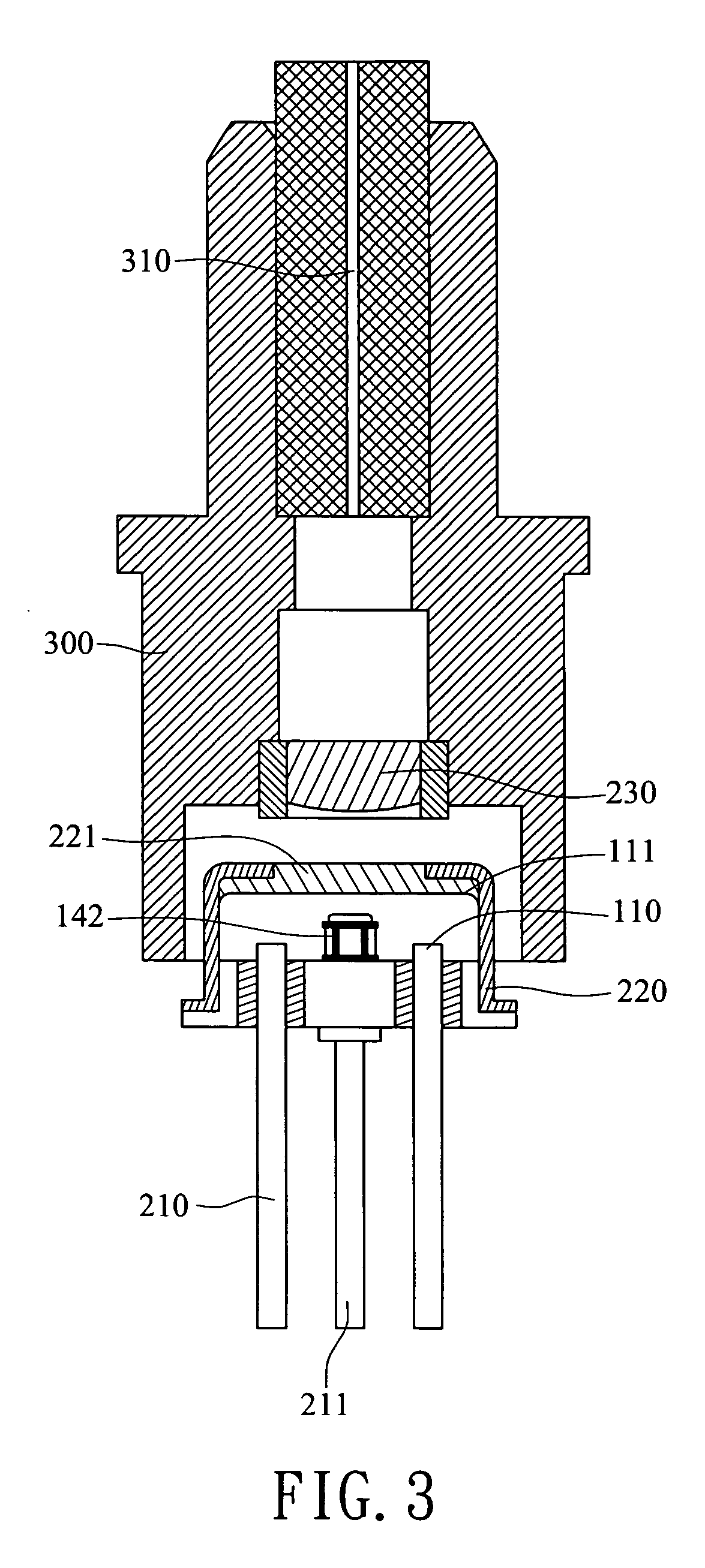Receiver optical subassembly
a technology of optical sub-assembly and receiver, which is applied in the direction of optical elements, instruments, optics, etc., can solve the problems of large package size, complicated package process, and complicated facilities and processes, and achieve effective alignment of optical transceiver elements, small size, and high performance
- Summary
- Abstract
- Description
- Claims
- Application Information
AI Technical Summary
Benefits of technology
Problems solved by technology
Method used
Image
Examples
Embodiment Construction
[0016] In the invention, the anode and cathode of the photoreceiver are coplanar (i.e. back-received photodidoe) and connected to the traces so as to reduce the parasitic impedance effect, improve the high speed performance of the optical subassembly and reduce the package size.
[0017] As shown in FIG. 1, a constructional view of a photodiode and a transimpedance amplifier in an embodiment of the invention, the photodiode 110 and the transimpedance amplifier 130 are electrically connected to the high-speed traces 120 formed on surface of the ceramic substrate 100. The positive and negative pins of the photodiode 110 are coplanar and connected to the high-speed traces 120. The transimpedance amplifier 130 is electrically connected to the high-speed traces 120 via flip chip, wire bonding or other methods. The high-speed traces 120 connected between the photodiode 110 and the transimpedance amplifier 130 surround with the ground pads 140. The ground pads 140 also electrically connect d...
PUM
 Login to View More
Login to View More Abstract
Description
Claims
Application Information
 Login to View More
Login to View More - R&D
- Intellectual Property
- Life Sciences
- Materials
- Tech Scout
- Unparalleled Data Quality
- Higher Quality Content
- 60% Fewer Hallucinations
Browse by: Latest US Patents, China's latest patents, Technical Efficacy Thesaurus, Application Domain, Technology Topic, Popular Technical Reports.
© 2025 PatSnap. All rights reserved.Legal|Privacy policy|Modern Slavery Act Transparency Statement|Sitemap|About US| Contact US: help@patsnap.com



